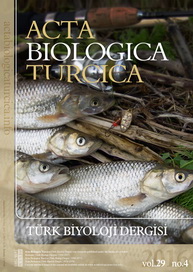Surimi and Surimi Products Technology
Abstract
Surimi technology and development of products relying on surimi technology have been carried out by the countries of Far East and Europe as well as the USA since the beginning of 1940's. However, production of food relying on surimi technology has never been operational in Turkey, yet. Surimi technology has developed in aforementioned countries because (1) economically less important species can successfully be converted to a valuable product, (2) shelf life of frozen surimi is long, (3) surimi has a substantial amount of functional protein content, and (4) production of surimi and related products are rather easy when accompanied by various technologies together with the use of additives. Surimi is Japanese term describing wet concentrate of fish muscle protein.
Keywords
Full Text:
PDFReferences
Bullens C.W., Lanto M.G., Lee C.M., Modliszewski J.J. 1990. The function o carrageonan based stabilizers to improve quality in fabricated seafood products. In: Advances in Fisheries Technology and Biotechnology for Increased Profitability, Pub.Co.,Inc. Chap. 3. Lancaster. pp: 313-324.
Bugarella J.C., Lanier T.C., Hamann D.D., Wu M.C. 1985. Gel strength development during heating of surimi in combination with egg white or whey protein concentrate. Journal of Food Science, 50: 1595-1597.
Chen J.S. 1987. Optimization in the formulation of surimi-based extruded products. M.Sc. thesis, University of Rhode.
Clark R. 1980. Hydrocolloid applications in fabricated mince fish products. In: R.E. Martin (Ed.). 3rd National Technical Seminar on Mechanical Recovery and Utilization of Fish Flesh. National Fisheries Institute, Washington, D.C. pp: 284-298.
Çaklı Ş., Duyar H.A. 2001. Surimi Teknolojisi. Ege Üniversitesi. Su Ürünleri Dergisi, 1(2): 255-269.
Ercoşkun H. 2000. Turkiye Fisheries Report. Country Report. Handling and Primary Processing of Marine Products Jica Kanagawa International Fisheries Training Center May 29th.
Kolsarıcı N., Ensoy Ü., 1996. Surimi Teknolojisi. Gıda, 6: 389-401.
Lanier T.C. 1986. Functional properties of surimi. Food Technology, 40(3): 107-114.
Lanier T.C. 1990. Interactions of muscle and non muscle proteins effecting heat-set gel rheology, In: N. Parris, R.A. Barford (eds.). Macromolecular Interactions and Food Colloid Stability: ACS Symposium Series. pp: 268-284.
Lee C.M. 1984. Surimi process technology. Food Technology, 38(11): 69-80.
Shimizu Y. 1965. Manufacturing meyhod of leached meat. Japanese Patent Showa, 40-21224.
Yoon K.S., Lee C.M. 1990. Effect of powdered cellulose on the texture and freeze-thaw stability of surimi-based shellfish analog products. Journal of. Food. Science, 55: 87-91.
Refbacks
- There are currently no refbacks.

